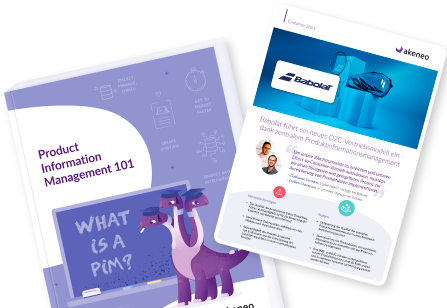Apr 23, 2019
Add Instagram to the ever-growing list of places merchants can sell products. The Facebook-owned social network recently announced they would be addin...

Add Instagram to the ever-growing list of places merchants can sell products. The Facebook-owned social network recently announced they would be adding eCommerce and payment capabilities to its platform, which was already a popular and influential home for brands and retailers.
Instagram is far from an anomaly, of course. The social network’s parent company, Facebook, already offers eCommerce capabilities, as does fellow social networking app Snapchat. These new social media-driven sales efforts are just the latest in what has been an explosion of sales channels in recent years. Decades ago, merchants needed to worry about just a single channel (their physical store) but now exist in an omnichannel world, selling products everywhere from brick-and-mortar buildings to virtual reality apps.
While omnichannel commerce can present new complications and concerns to brands and retailers, it also presents a massive opportunity for success. According to recently released research, adding a single channel can boost a brand or retailer’s revenue by as much as 38 percent, while adding two channels can lead to growth of 120 percent, and adding three can result in an increase of nearly 200 percent.
But simply starting sales on a new commerce channel doesn’t guarantee that revenue is about to come pouring in. Brands and retailers that do decide to widen their offerings need to make sure that their products and their team are ready to make their debut on new channels.
Here are a few tips to make sure your omnichannel efforts bring an increase in revenue:
1. Use PIM to standardize, correct, and enrich product information
No matter what channel you’re selling on, product information is crucial for success in the online age.
When they decide they need (or simply want) to make a purchase, customers typically take to search engines like Google to find the object of their desire. But if your product information isn’t readily available, search engines won’t be able to find your products — meaning that customers won’t be able to find them either. That product information also needs to be highly consistent and accurate — most customers won’t purchase a product they aren’t sure suits their needs, nor will they buy if product information is missing — and emotionally resonant, if you want to turn shoppers from browsers to buyers.
Add it all up, and product information becomes crucial to any omnichannel sales effort. By using a PIM solution to manage your product catalog, you can ensure that your product information is accurate, consistent, emotionally compelling, and ready for its omnichannel debut.
2. Tailor product information to your new channel
Just like snowflakes, no two channels are alike. Each has its own unique properties and requirements for merchants selling their products.
On social media, for instance, showcasing images can improve the conversion rate on a product. Marketplaces, meanwhile, bring their own challenges. For example, marketplaces like Amazon have specific product listing requirements, meaning you may not be able to provide the same emotional context or experiences as your own website.
As Akeneo CEO Fred de Gombert explained at this year’s Akeneo PIM Summit, “there’s no one experience to rule them all.” Each channel requires a unique and tailored experience in order to resonate with customers, so make sure your new store is built to take advantage of the differences between each channel.
3. Take advantage of channel complementarity
Once you’ve optimized product information and gotten your new sales channels off the ground, make sure they’re working together to drive sales. You can do so by embracing the complementary nature of omnichannel marketing and sales.
Take global retailer Walgreens, for example. The company has engineered its omnichannel experience to take advantage of each channel’s advantages and capabilities and uses them to improve the experience across the board. Pharmacy customers, for example, can use the company’s mobile app to order a refill for prescriptions, then present their mobile device at the register to pick up their medication.
By providing valuable product data and information to both customers and employees along every step of the journey, your various sales channels can help fuel increased offline and online sales alike.
Get ready to go omnichannel
There’s clearly no shortage of potential rewards for brands and retailers who embrace omnichannel selling — that is, if their product information is managed and enriched properly.
To make sure your company is ready to go omnichannel, make sure your product information is accurate, consistent, and emotionally compelling. Then, tailor that data to the properties and requirements of your new channels, and take advantage of omnichannel complementarity.
That way, whether it’s a new Instagram account or the latest addition to Amazon, you can ensure your new channel becomes a successful one.
Go omnichannel! Contact us to learn more about PIM, get started by downloading our eBook Product Information Management 101 or find out how to triumph over your omnichannel competition with Fred de Gombert’s speech at APS 2019.
Sign up for our newsletter and stay ahead of the curve on everything you need to know about product information management, product experience management and how to unlock growth for your organization.
